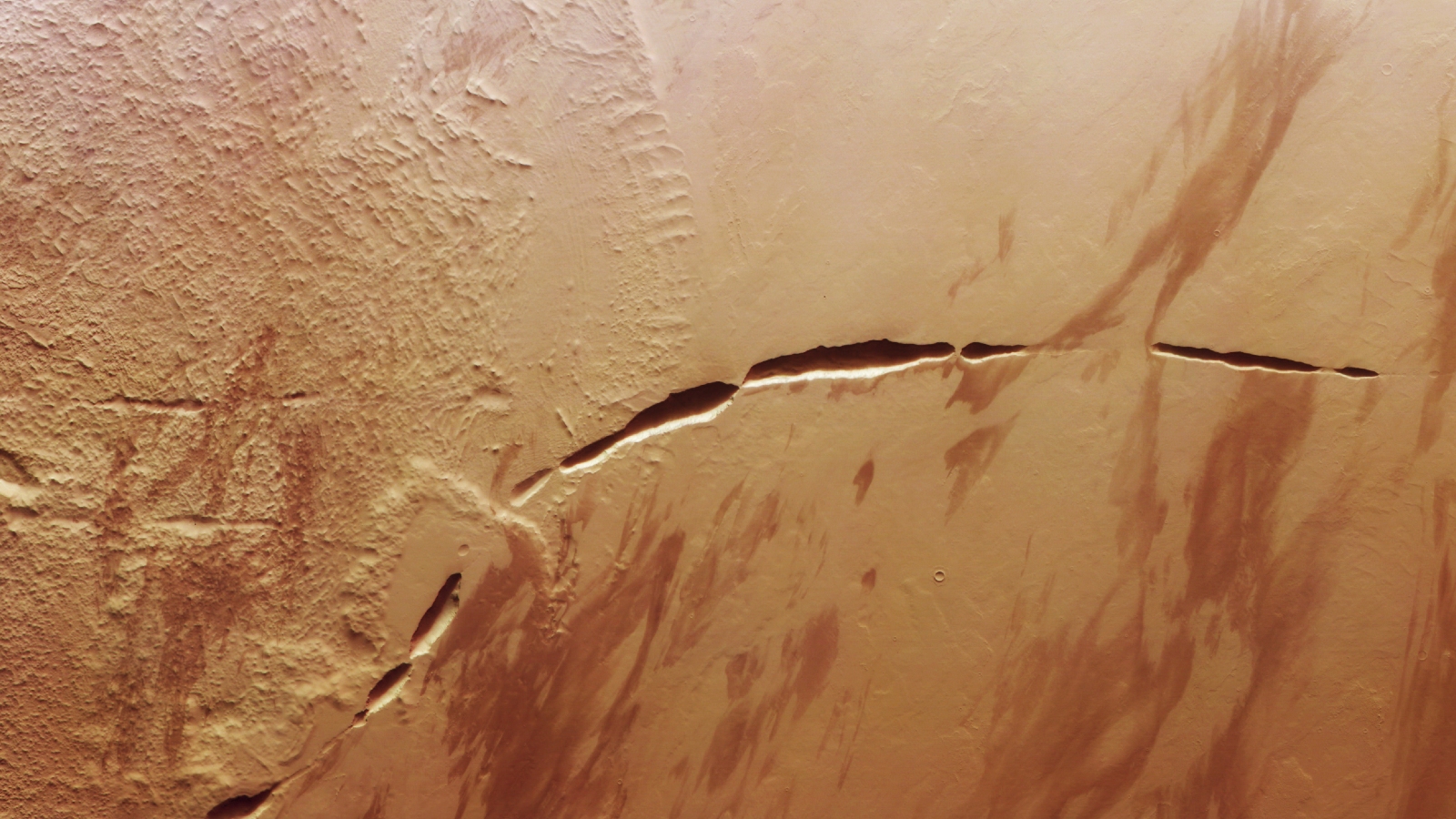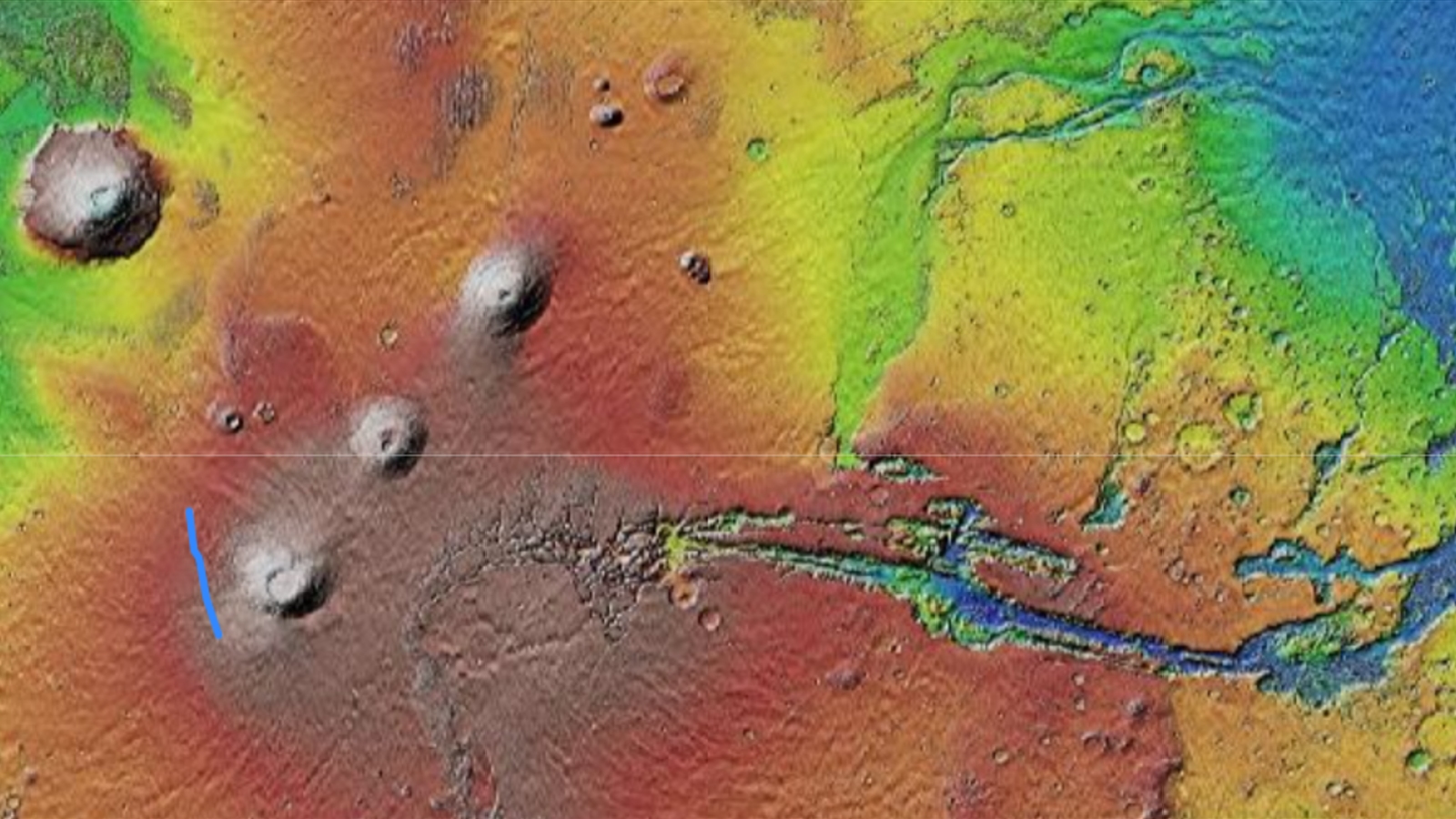
A satellite orbiting Mars has captured the best-ever images of a gigantic "scar" carved across the Red Planet's surface. The dark ravine, which is accompanied by unusual zebra-like stripes, is likely the result of extreme volcanic activity millions of years ago.
The striking surface feature, named Aganippe Fossa, is a graben — a "ditch-like groove with steep walls on either side," according to the European Space Agency (ESA). Astronomers first spotted it as early as 1930 but only officially named it in 1976, according to the U.S. Geological Survey.
The graben is incomplete, with various breaks in the groove from end to end, but it is considered to be a single structure that stretches around 375 miles (600 kilometers). That is longer than the Grand Canyon, which is 277 miles (446 km) from one end to the other, according to the National Park Service. However, the structure is still significantly shorter than Mars' Valles Marineris — the largest canyon in the solar system, which runs for more than 2,500 miles (4,000 km) along the Red Planet's equator.
ESA's Mars Express orbiter captured the newly released photos on December 13, 2023. The satellite has been circling the Red Planet on an elliptical orbit for more than two decades.
One of the most interesting things in the photo is the surrounding landscape, which varies on either side of the giant crack. To the left, the ground appears to be very uneven and contains several mounds, grooves and ridges. But to the right, the land looks smooth and is painted with "zebra-like" rocky stripes, ESA representatives said.
This stark difference was likely caused by historic wind erosion to the right of the graben, which wore down the planet's surface in that area. However, it is unclear why the rest of the surrounding landscape was unaffected.
Related: 15 Martian objects that aren't what they seem

Aganippe Fossa is located near the base of Arsia Mons, a 12-mile-tall (20 km) extinct volcano on Mars' Tharsis plateau. This region contains two other major volcanoes, Pavonis Mons and Ascraeus Mons, and together the three dead peaks form a near-perfect line perpendicular to the planet's equator. The trio is flanked by Olympus Mons, the tallest peak in the solar system, which lies just outside of Tharsis and stands over 16 miles (25 km) above the surface — around three times taller than Mount Everest.
The scar was likely caused by a large plume of magma that pooled underneath Arsia Mons long ago, pushing the planet's crust upward and tearing apart the surface, ESA representatives wrote.
It is currently unclear how old Aganippe Fossa is, but NASA previously estimated that the volcano stopped erupting around 50 million years ago. However, scientists recently discovered evidence of a Martian volcanic eruption as recently as 50,000 years ago, hinting that volcanic activity on the Red Planet is not as ancient as we previously thought.
Similar grabens also exist in Noctis Labyrinthus (meaning "Labyrinth of Night" in Latin) — a massive canyon around the size of Italy, which is situated between Tharsis and Valles Marineris.
The area surrounding Tharsis is one of the most geologically interesting regions on the Red Planet. The region also caught the attention of researchers earlier this year after the discoveries of a giant volcano hidden next to Noctis Labyrinthus and more than 150,000 tons of frozen water across the peaks of the three Tharsis volcanoes.







